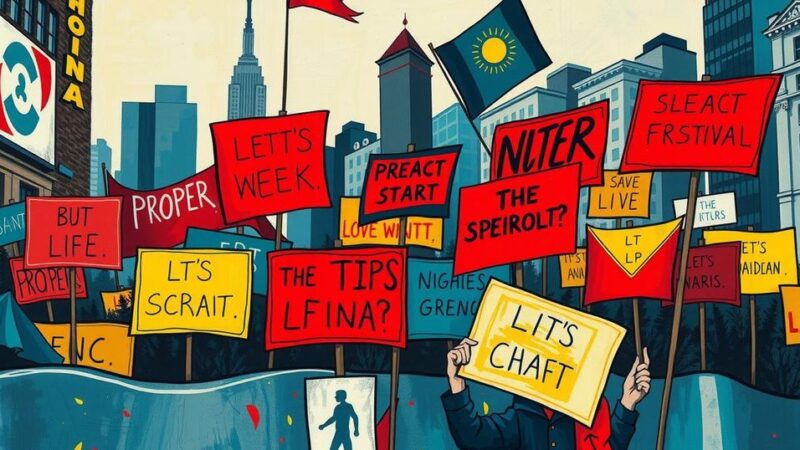Voting has begun for the 39th World Zionist Congress, allowing American Jews to influence the future of Israel. The election is critical for determining leadership of key institutions overseeing substantial funding and settlements. A divide exists between liberal and right-wing Orthodox factions, impacting issues like pluralism and education. Participation has historically been low, prompting calls for greater awareness and engagement.
Voting commenced on Monday for the election concerning the 39th World Zionist Congress, offering American Jews a significant opportunity to shape the future of Israel. This election is crucial as it determines the legislative authority of an organization established by Theodore Herzl 128 years ago, overseeing $5 billion in Jewish funding and control over key institutions like the Jewish Agency and the Jewish National Fund, which owns 13% of Israeli land.
Eligible voters include any Jewish adult residing in the United States who accepts a series of Zionist principles and pays a registration fee of $5. The election highlights intense ideological divides between liberal and right-wing Orthodox factions, both striving to influence the future of major Zionist institutions and their funding objectives during a pivotal period in Israel’s history. The outcomes will bear implications on critical areas such as religious pluralism, financing for Jewish education, expansion of settlements, and relations between Israel and the Diaspora.
Rabbi Josh Weinberg, who leads the campaign for the Reform movement’s liberal candidates, remarked, “This election is about nothing less than the soul of the State of Israel and the Jewish people.” He emphasized that diverse perspectives exist regarding the definition of a Jewish state and being Jewish, and that voters have an opportunity to shape these notions through democratic participation.
The Vote Reform slate is one of the 21 lists competing for the 152 seats allocated to American Jewry, a marked increase from the previous election’s 15 slates. The elected representatives will join 173 delegates from other global Jewish communities and 200 representatives from Israel selected by local political parties,
In prior elections, the Reform slate garnered a plurality of American votes, yet the significant presence of Orthodox lists, particularly Mizrachi and Eretz Hakodesh, heavily influenced the results in 2020, granting a slight majority to the right-wing bloc. Eretz Hakodesh, running again, aims to expand its influence.
Numerous newly entered slates aim to represent specific demographics; Am Yisrael Chai focuses on college students, the Israeli American Council slate attends to Israeli expatriates, while Beyachad supports Russian-speaking Jews. Conversely, the AID Coalition seeks to represent the leftist sentiment among Israeli expats, alongside the youth-targeted platform of ANU: A New Union.
Despite an overall left-leaning sentiment among American Jews, actual participation levels in elections remain low. The 2020 election saw only 125,000 votes cast, improving from 56,000 in 2015 but falling short of the peak turnout of 211,000 in 1987. Yizhar Hess, vice chairman of the World Zionist Organization, described the low turnout as a “shonda,” which risks undermining the pluralism essential to the essence of Zionism. He is actively campaigning to raise awareness about the importance of participating in the upcoming elections.
The election for the 39th World Zionist Congress offers American Jews a pivotal platform to determine the future of key Zionist institutions and policies impacting Israel. With various factions contending for representation, this election reflects ideological divides over Jewish identity and priorities. Critical issues regarding religious pluralism, funding, and international Jewish relations are at stake. Participation levels remain a concern, with efforts ongoing to raise awareness and encourage voter turnout among American Jews.
Original Source: www.jta.org






